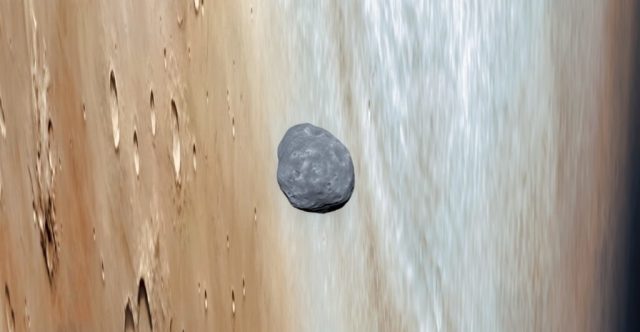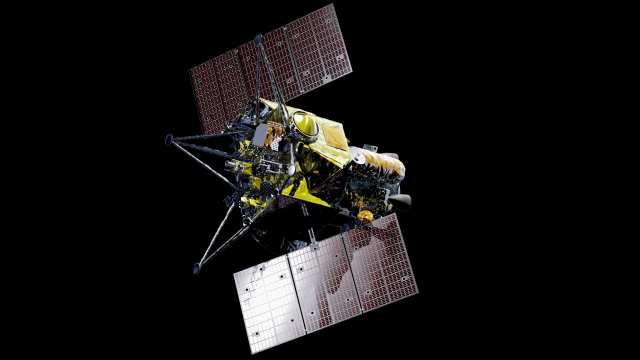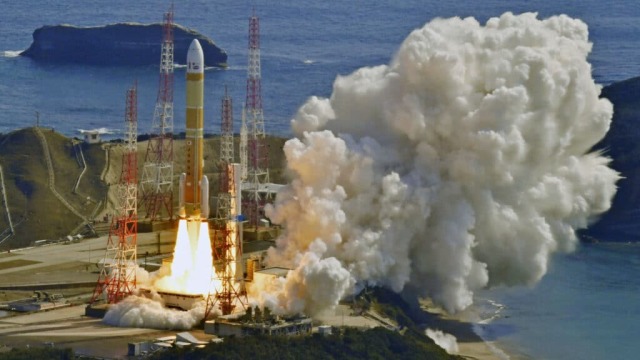The probability of postponing the Martian Moons eXploration mission, which is supposed to deliver regolith from the Mars satellite to Earth, is growing every day. A final decision has not yet been made, but the readiness of the new Japanese H3 rocket for the nearest launch window to the Red Planet is questionable. The Land of the Rising Sun has no other suitable carriers.
Orbital mechanics is a heartless thing: it dictates how long it will take to fly to a particular celestial body and how much fuel it will take. The period of optimal starting conditions is called the launch window. For the journey from Earth to Mars, it opens about once every two years. The nearest one is autumn 2024, from the end of September to the beginning of November.
In order to be in time for this period, any mission towards the Red Planet must be ready in advance, preferably at the end of the summer of 2024. That is, you need to have a launch vehicle and the interplanetary vehicle itself so that each component passes all tests, tests, and the flight program is fully calculated. Haste in space exploration is unacceptable, it only increases the risk of failure.
The problem with the Martian Moons eXploration (MMX) mission is the chosen rocket — the latest H3. Its development has been underway since 2013, and according to the plan, the carrier was supposed to replace the successful, but expensive, by modern standards, H-IIA (H-2A) rocket. The project of its creation turned out to be more difficult than expected, and instead of 2020, H3 first launched in March 2023, after an unsuccessful launch attempt in February.
The test flight lasted a little less than 15 minutes, the first stage worked fine, but the second failed: there were problems with the engine ignition.
The next test flight of the H3, according to the [...] NHK website, is scheduled for the end of March 2024. Even if it is successful, Mitsubishi Heavy Industries has less than eight months left to assemble and fine-tune the media for the MMX. In case of failure, the Martian mission will not fly anywhere at all in the nearest launch window. Theoretically, you can try to send a scientific station on a previous generation rocket. But, firstly, its payload capacity is barely enough, and secondly, the last three H-2As currently in production have already been assigned to their missions - it's not a fact that it will be possible to replace the payload so quickly.
There is an active discussion within the Japan Aerospace Exploration Agency (JAXA) about postponing the launch of MMX, [...] Kyodo New s reported, citing its own sources. This is a very important mission for the Land of the Rising Sun, and its failure will seriously damage its reputation. However, the postponement means that at the 2025 World Expo in Osaka (Expo 2025), it will not be possible to show live images from the first ever visit to the Mars satellite Phobos (if, of course, it is successful).
There is another emergency alternative to the H3 — the SpaceX Falcon Heavy. An American private space company has demonstrated the ability to prepare rockets for launch in record time. And if you want, you can make it in time — however, you will have to transport the device across the ocean, conduct all pre-launch testing again and implement MMX into the carrier, to which the mission was not initially adapted.
Finally, the trajectory will need to be calculated anew. Not to mention the issue of national prestige — it is an honor to launch your own interplanetary station on your own rocket. Therefore, it is impossible to say for sure that Falcon Heavy is officially considered as a carrier for MMX, although there are rumors.
The problems with the second stage in the H3 test launch came as an unpleasant surprise to everyone. The fact is that it is based on the time-tested and extremely reliable design of the second stage of the H-2 family of missiles. And since 1998, there has not been a single failure due to her fault, which is 38 launches. The LE-5B-3 engine is installed on the second stage of the H3 — not a copy, but an upgrade of its predecessors, and this may be the cause of the accident. But before the test flight, he was the least suspicious.
The first step is another matter. Among all other carriers, H3 stands out with first-stage engines. A completely new LE-9 is being installed on it, operating in a phase transition cycle. In such engines, part of the fuel is sent to cool the combustion chamber and nozzle, evaporating in the nozzles around them. The resulting high-pressure gas drives the fuel and oxidizer turbopumps. This makes it possible to increase the efficiency of the engine, but there are serious fundamental limitations on the maximum developed thrust (size of the structure).
For comparison: as a rule, turbopumps are powered by special small combustion chambers (gas generators), in which part of the fuel is consumed. The exhaust of gas generators goes either outside and is practically wasted, or directly into the main combustion chamber. But the latter option is very difficult to implement.
 |
| Phobos on the background of Mars. A combined image based on images taken by the Mars Express spacecraft. |
| Source: ESA, DLR, FUBerlin, AndreaLuck |
Liquid rocket engines with a phase transition cycle are usually used only on the upper stages of the carriers. In fact, the H3 became the first rocket with such engines in the first stage. But to create the LE-9, Japanese engineers had to do a great job — it was the engines that became the main reason for delays in the development of a new carrier. According to calculations, this technical solution will lead to a significant reduction in the cost of operation of the H3, but how it will turn out in reality is not yet clear.
The Martian Moons eXploration mission consists of a flight, research and return modules, as well as a rover weighing 30 kilograms. According to the flight plan, the device should take soil from Phobos and send a sample weighing about 10 grams to the Ground. MMX will then remain in the Mars system and continue to study its moons.


